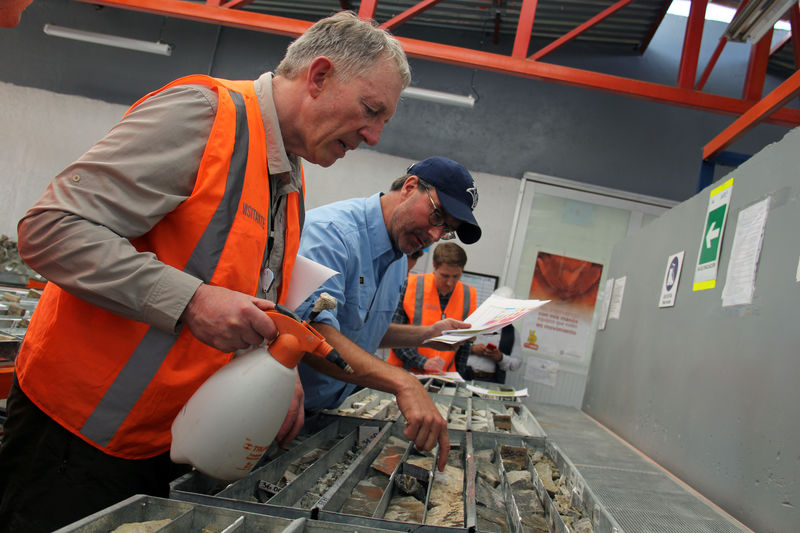By Julia Symmes Cobb
BURITICA, Colombia (Reuters) - Last September, Continental Gold Inc's painstaking efforts to build community support for its gold and silver mine beneath the green skirts of Colombia's Andes suddenly looked vulnerable when gunmen killed four of its employees in two separate attacks.
Now, nine months later, and with upgraded security, the Buritica project is still on track to kick off production next May, with managers acknowledging last year's setback but also confident the venture will prosper.
"Even if it's terrorism you have to accept that you failed. You lost a life you failed, period," Chief Executive Ari Sussman told Reuters last week on the sidelines of a tour of the mine for journalists and investors. "We couldn't have seen this coming but it happened so we've rebuilt our system and brought in new people."
Buritica - whose high-grade ore and hearty output estimates make it a rare find - is shaping up as a key test for the future of large-scale underground mining in Colombia, whose mostly unexplored mineral riches have miners rubbing their hands.
The project also represents a moment of truth for junior miner Continental Gold, which has taken on debt to finance construction and which, like many junior miners, has not turned a profit for years. Buritica will be its flagship, allowing it to possibly overtake Canadian rival Gran Colombia Gold Corp as the country's biggest underground gold miner.
Other multinational gold miners like AngloGold Ashanti Ltd, Eco Oro Minerals Corp, Red Eagle Mining Corp and Mubadala Investment's Minesa have tried and so far failed to mount large-scale, successful underground projects in Colombia, stymied by a smorgasbord of legal, security, environmental and community relations problems.
'A TERRORIST ATTACK'
Continental's efforts to get support from the people of Buritica, population 7,000, were hailed as innovative when the project began. The town's population doubled a decade ago amid a gold rush, which sent illegal mining and violence soaring.
It seemed Continental had found the positive community relationships and security that eluded other multinational miners by partnering with charities on development efforts and providing hundreds of jobs.
Then four employees were killed in a single month - one near Buritica and the others at a different exploration site.
The families of some victims accused Continental of negligence, but the company says it had reacted to local rumors and was planning to evacuate the employees from the exploration site.
"That was a terrorist attack plain and simple. It was the most tragic event that I've ever gone through in my life," Sussman said.
The company hired new security directors and is working harder to gather intelligence, Sussman said. It has paused all exploration outside the Buritica concession until the mine is up and running.
Several former leftist rebels, who did not demobilize under a 2016 peace deal, are being prosecuted for the second attack.
Security looks to be the only factor that could hurt the project, said analyst Paul Harris, organizer of the Colombia Gold Symposium.
"The kind of people that cause those incidents - there's always the outside chance that they'll try and do something like that again," he said.
Several investors in the project, speaking on condition of anonymity, said the situation would need to be much worse before their enthusiasm is dampened.
Continental, 20% owned by Newmont Goldcorp, says the mine is worth $850 million, assuming a gold prices of $1,200 an ounce.
HIGH-GRADE ORE
U.S. gold futures hit a 14-month high of $1,358.04 per ounce during trading this month.
The mine's large vertical deposit is expected to produce between 250,000 and 300,000 ounces of high-grade gold and 460,000 ounces of silver per year for 14 years, Continental says, and the life of the mine may be extended depending on further exploration.
The project's combination of high-grade ore and hundreds of thousands of ounces of potential output make it comparable to well-known high-grade mines like Kirkland Lake Gold Ltd's Macassa in Ontario and Fosterville in Australia.
Other parts of the concession likely contain significant amounts of gold, silver and other minerals, the company says.

"There is a lot of expectation on this project from the whole country," Sussman said. "It's been a Cinderella turn-around story from terror to where it is today - so we need to deliver."